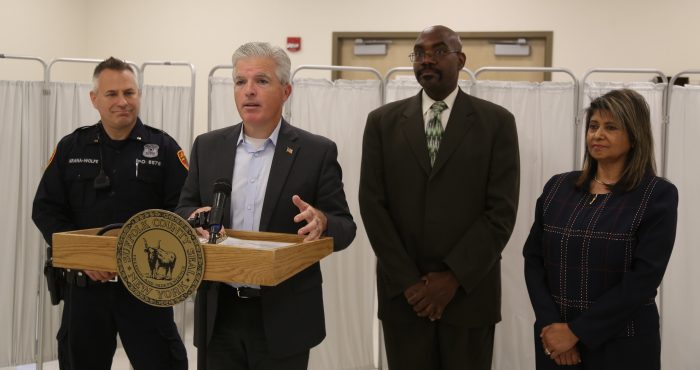By Samantha Rutt
In a bid to enhance water service reliability and meet the growing demands of its customers, the Suffolk County Water Authority has embarked on a substantial water main replacement project in Huntington. The project, currently underway near West Main Street, involves replacing over 4,600 feet of old, undersized water main with a larger ductile water main.
The new 12-inch main is poised to significantly improve water flow in the system, allowing SCWA to deliver a more dependable and efficient service to its customers in the area. SCWA Chairman Charles Lefkowitz emphasized the importance of maintaining the integrity of the water main system, particularly during the winter, which experiences the highest incidence of water main breaks.
“During the winter, we see the busiest time of the year for water main breaks. Being proactive and replacing aging infrastructure ensures that we can reliably serve our customers with high-quality water without interruption,” Lefkowitz said in a statement.
He explained the proactive approach of replacing aging infrastructure to ensure uninterrupted access to high-quality water for customers.
“Our water main system is one of the most important parts of our infrastructure, making it crucial for SCWA to ensure its structural integrity,” Lefkowitz said.
The significance of this project is amplified by its location in one of Huntington’s busiest areas. West Main Street, a bustling thoroughfare that hosts numerous businesses, restaurants, residences and the renowned Paramount theater, attracts many visitors daily. Ensuring a robust water distribution infrastructure in this area is essential in minimizing the risk of main breaks and water service disruptions.
“The part of Huntington in which this project is taking place is one of the village’s busiest areas, making this project especially important to our residents,” Lefkowitz explained.
The project, which is expected to be completed by mid-February, aligns with SCWA’s commitment to providing water that can be trusted and service that can be relied upon. It reflects the authority’s dedication to modernizing infrastructure to meet the evolving needs of its customers while ensuring the continued prosperity of Huntington’s vibrant community.
Residents and businesses alike can look forward to a more resilient water system that supports the thriving energy of West Main Street and SCWA’s ongoing efforts to deliver water service to the Huntington community.
As the project progresses, SCWA plans to continue to keep the community informed about any developments or potential disruptions, prioritizing transparency and collaboration throughout the process.
For more information and updates on the water main replacement project, residents are encouraged to visit SCWA’s official website (www.scwa.com) or contact their local SCWA office.




















